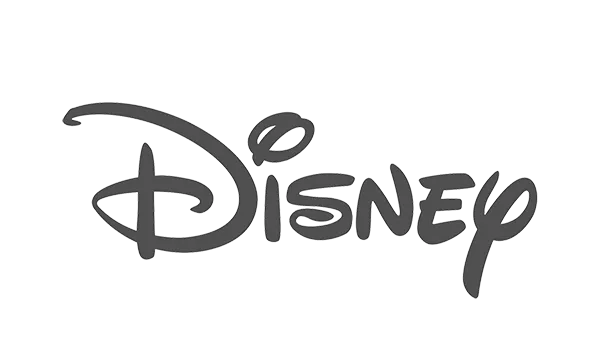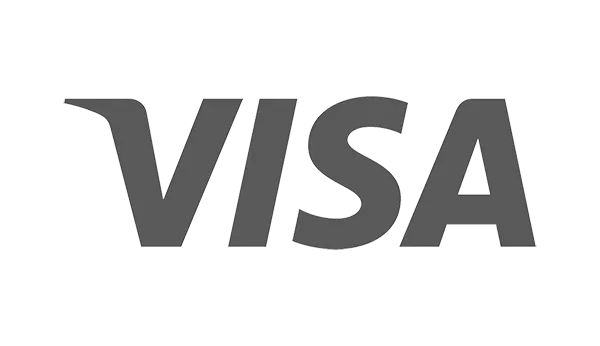In recent times, the corporate landscape has borne witness to the devastating impact of toxic leadership on organizations. Such leadership not only affects the work environment but can have lasting consequences that ripple through every tier of a company.
By understanding the nuances of toxic leadership, organizations can be better equipped to address and mitigate its impacts, fostering a healthier and more productive work environment.
This article aims to shed light on the characteristics and implications of toxic leadership and to draw a clear distinction between challenging leadership and its toxic counterpart. We’ll also delve into the healing process of moving from toxic leadership to a healthy organization where mutual respect is evident.
What is a Toxic Leader?
A toxic leader is an individual in a leadership position who exhibits dysfunctional behaviors that can have a detrimental impact on subordinates and the organization as a whole.
They often prioritize their own needs over those of their team, display a pattern of negative behaviors, and foster a toxic work environment. Their leadership can be a direct cause of decreased employee morale, productivity, and overall organizational health.
Identifying Signs of Toxic Leadership Behavior
According to a recent survey by Life Meets Work Consulting, a staggering 56% of employees currently work under a toxic CEO, contributing to a detrimental work atmosphere.
Recognizing toxic behavior is the first step toward addressing and rectifying it. Unfortunately, toxic leadership can manifest in microaggression and manipulative behaviors that are difficult to pinpoint. Subtle signs and red flags include:
- Domineering: Toxic leaders tend to exercise control oppressively, stifling the growth, creativity, and autonomy of team members. It’s their way or the highway.
- Micromanagement: They constantly need to control every detail, stifling autonomy.
- Manipulation: Toxic leaders use information and people strategically for personal gain, without considering the wellbeing of others.
- Dishonesty: They might resort to deceit, half-truths, over-exaggeration, or outright lies to achieve their goals or mask their mistakes.
- Lack of empathy: Toxic managers and leaders show little to no concern for the emotional and professional well-being of their subordinates. They would only act kindly upon self-interest.
- Resistance to feedback: When confronted, a toxic leader’s behavior is typically to dismiss or discredit constructive criticism. They may even retaliate against those who offer it. This can even manifest in narcissistic tendencies to discount any opinions about work that conflict with their own view.
- Blame-shifting: Instead of taking responsibility for failures or mistakes, a toxic boss may shift the blame onto others or resort to gaslighting.
- Unpredictability: They might be inconsistent in their behavior, leading to an atmosphere of uncertainty and fear.
- Favoritism: They might unfairly favor certain members of a team over others, leading to a divided and competitive work environment.
The presence of a toxic leader can have widespread consequences, including high employee turnover, decreased job satisfaction, reduced productivity, and even potential harm to the company's reputation. Recognizing and addressing toxic leadership is essential for the well-being of employees and the overall success of an organization.

Challenging Leadership vs Toxic Leadership
Understanding these distinctions is the first step towards recognizing toxic patterns within organizations and initiating the necessary changes to foster a healthier work environment.
Challenging Leadership
A challenging leader possesses good leadership skills and maintains a high benchmark of performance.
They emphasize growth, encourage team members to push their boundaries, provide constructive feedback, and take responsibility for their decisions. While they may set high standards, they also equip their teams with the resources and support to achieve them.
A challenging leader may have a no-nonsense leadership style. Ultimately, however, they provide a form of mentoring where subordinates become better at their jobs under their leadership.
Toxic leadership
A toxic leader operates on fear, uses blame as a tool, avoids responsibility, and stifles any form of dissent or feedback. Their approach isn't about growth but about maintaining their position and control at the expense of others.
A toxic leader may be so overly critical that subordinates question their own competency and self-worth under their leadership. These people are not pushed to be better at their jobs, but rather made to believe they cannot perform good work without the bad leader’s input.
The Aftermath of Toxic Leadership
The ripple effect of toxic leadership can be felt at every level of an organization. From individual employees to the overarching brand reputation, the consequences can be far-reaching and devastating.
According to a report by McKinsey, toxic workplace behavior is the leading cause of adverse effects such as intentions to resign and signs of burnout, depression, and anxiety. Based on 2023 data, it is also the leading cause of employee turnover.
Psychological and Emotional Impact on Employees
- Stress and burnout: Constant exposure to negativity, excessive demands, and lack of appreciation can lead to elevated workplace stress levels, which, if unchecked, may result in burnout.
- Low self-esteem: Employees may begin to doubt their capabilities due to constant undermining, criticism, and other blows to their self-esteem.
- Mental health issues: The ongoing stress might culminate in anxiety, depression, or other employee mental health concerns.
- Distrust and cynicism: Trust is eroded in environments with toxic leadership, making employees more cynical and less likely to engage in teamwork or collaboration.
Organizational Consequences
- Decreased morale: A pervasive sense of unhappiness and lack of job satisfaction can permeate the team or organization.
- Increased turnover: Many employees might opt to leave rather than endure ongoing toxic conditions, leading to high turnover rates.
- Loss of trust: Trust, once broken, is challenging to rebuild. Teams may find it difficult to trust leadership even after the toxic leader departs.
- Reduced productivity: A toxic atmosphere can stifle creativity, innovation, and the overall drive to achieve organizational goals.
Brand Reputation and External Perceptions
- Damaged reputation: Stakeholders, partners, and even customers might become wary of associating with an organization known for toxic leadership.
- Loss of talent: Top talent might be hesitant to join or may leave, seeing the toxic environment as detrimental to their career growth. This can be based on reports of bad leadership practices on employer review sites such as Glassdoor.
- Reduced customer loyalty: External perceptions can affect customer trust and loyalty, impacting sales and growth.
According to a survey conducted by The Muse in December 2022, 68% of female participants reported encountering toxic situations at work, compared to 64% of male participants and 59% of nonbinary individuals.
Of those who experienced such toxic work environments, 53% had already left, while 22% were actively seeking to leave.

How to Rebuild Organizations after Toxic Leadership
Rebuilding in the aftermath of toxic leadership is undoubtedly complex. The process has several layers to consider. Each member, from executives to frontline employees, plays a crucial role in this recovery journey.
The key lies in adopting the right strategy. One that is both comprehensive and tailored to the unique challenges and wounds inflicted by the toxic leader.
Consistency is vital. Occasional efforts or mere lip service won't suffice. The organization needs to continuously and diligently work towards creating a healthier environment, rectifying past mistakes, and instilling new, positive behaviors.
Next, we present a strategic roadmap with five pivotal steps to navigate the challenging decision of rebuilding psychological safety and cohesion post-toxic leadership, ensuring a more harmonious and productive future for all stakeholders.
Acknowledgment and Accountability
- Acceptance is the first step: Before rebuilding can occur, organizations must first accept and openly acknowledge the existence of toxic leadership. Sweeping it under the rug or downplaying the effects will not lead to genuine healing or change.
- Hold them accountable: Whether it's through disciplinary actions, intensive leadership coaching, or, in extreme cases, removing the leader from their position, it's essential to ensure that toxic leaders face consequences for their actions.
Rebuild Trust Among Employees
- Reestablish open communication: Organize town halls, feedback sessions, and listening tours to foster dialogue, showing employees they're heard.
- Democratic decision-making: Encourage a culture where employees play an active role in decision-making processes, ensuring their voices shape the organization's future.
- Transparent healing: Transparency can be the balm for many wounds. Being open about the steps being taken to rectify past wrongs can instill confidence among employees.
Create a Safe and Inclusive Work Environment
- Holistic training: Launch comprehensive training programs focusing on diversity, equity, inclusion, and conflict resolution to educate and sensitize the workforce.
- Protection for whistleblowers: Implement a robust whistleblower policy, ensuring those who raise concerns are shielded from any retaliation.
- Promote mentorship and peer support: Encourage senior employees to guide juniors and establish peer support groups. This fosters an environment of learning and collaboration.
Foster a Healthy Workplace Culture
- Daily ethical operations: Incorporate organizational values and ethics into everyday operations, making them more than just words on a page.
- Reward the positive: Recognize and celebrate employees who exhibit desired behaviors, reinforcing the importance of positive actions. This incentivizes the work culture you want to build to heal from toxic influences.
- Stay updated: Continuously revisit and refresh the organizational culture and goals to ensure they remain relevant and in line with desired outcomes.
- Leadership's role: Leaders should exemplify the behaviors and leadership characteristics they wish to see in their teams. Their actions set the tone for the entire organization and must therefore match the type of leadership that is outlined in the organizational values.
Monitor Improvement
- Regular feedback: Implement routine check-ins and surveys to understand employee sentiments and gauge the organization's pulse.
- Open door policy: Encourage a culture where employees feel they can approach higher management with concerns. They must be able to flag destructive behavior from their peers or destructive leadership without fear of backlash.
- Third-party assessments: To ensure an unbiased view, consider using third-party audits or evaluations.
- Adaptability: Continuously refine strategies based on feedback received. This shows employees that their input genuinely influences change in the short-term, but also as a means to continuously improve the organizational culture.
The ultimate aim is to transcend past challenges and cultivate an environment where toxicity becomes a thing of the past. This means eliminating harmful behaviors and actively promoting inclusivity to ensure every individual feels valued, heard, and respected.
By doing so, organizations move towards a brighter, more harmonious future, where mutual respect and collaboration are at the forefront.
Technological Aids in Rebuilding Morale After Toxic Leadership
Leveraging technological tools is imperative for enhancing the reconstruction process after toxic leadership. They can streamline communication, provide quantitative data on morale and engagement, and even aid in reinforcing positive behaviors.
Each of the following tools offers unique functionalities tailored to various organizational needs.
1. Employee Engagement Platforms
- Pulse checks: Regular, quick surveys that gauge the mood and sentiment of the team. Employee engagement tools like TINYpulse or Peakon can assist leaders in identifying pain points, celebrating improvements, and staying connected to the team's pulse.
- Feedback channels: 360-degree feedback platforms allow employees to voice concerns, provide suggestions, and seek clarifications anonymously, fostering open dialogue without fear of retaliation.
2. Recognition and Reward Tools
- Peer-to-peer recognition: Platforms that allow team members to appreciate and recognize the efforts of their peers, fostering a culture of positive reinforcement.
- Milestone celebrations: Digital tools that track and celebrate work anniversaries, project completions, and other significant achievements, with special employee rewards, emphasizing the value of every contribution.
3. Training and Development Platforms
Digital courses on leadership, conflict resolution, diversity, and inclusion can be made accessible to all team members, ensuring a uniform understanding of the organization's values and standards.
- LinkedIn Learning: Offers a plethora of courses ranging from leadership to specific skills.
- Udemy for Business: Provides an extensive library of courses on a variety of subjects.
- Skillshare for Teams: Offers team memberships for curated courses.
4. Whistleblower and reporting systems
Secure and anonymous tools where employees can report incidents of misbehavior, ensuring that problems are flagged early and dealt with appropriately.
- NAVEX Global: Offers comprehensive ethics & compliance software including a whistleblower system.
- Whispli: An anonymous tool for employees to report wrongdoing.
- Convercent: Provides a whistleblowing hotline among other ethics and compliance solutions.
5. Data analytics and reporting
Centralized dashboards that collate data from various feedback channels, providing leaders with an overview of organizational health, and highlighting areas needing attention.
- Tableau: A leading visualization tool that can be customized for various reporting needs.
- Looker: Helps companies get value from their data.
- Power BI by Microsoft: A business analytics tool that provides interactive visualizations.
Conclusion
In the wake of toxic leadership, the journey to organizational recovery and transformation is neither swift nor straightforward. However, with dedicated effort, unwavering commitment, and the right strategies in place, organizations can emerge stronger and more resilient.
The lessons learned from facing and addressing toxic leadership can serve as foundational pillars for building a healthier, more inclusive workplace culture. It's important for organizations to stay vigilant, continually assessing their leadership and work environment to ensure toxic behaviors do not resurface.
Moreover, proactively investing in tools and strategies that promote open communication, transparency, and employee well-being will not only heal the wounds of the past but also propel the organization into a brighter, more prosperous future.




















